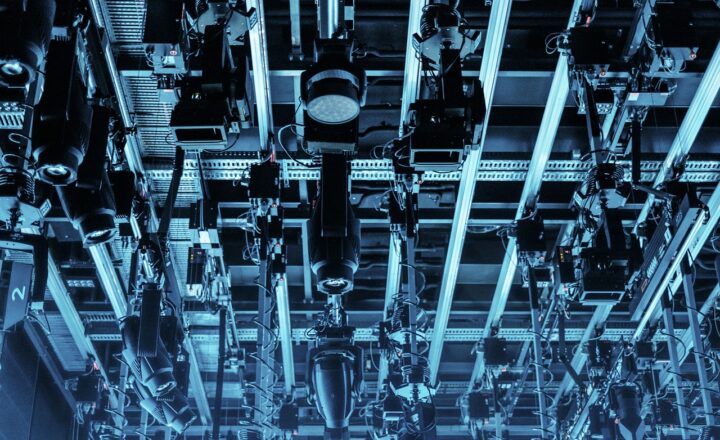The Dark Side of Innovation: Exploring the World of Modern Weaponry
November 18, 2024

Innovation has always been a double-edged sword; it has the power to improve lives and enhance society but also the potential for destruction and chaos. One of the most palpable manifestations of this duality is in modern weaponry. This article delves into the dark side of innovation as it pertains to weapon development, exploring the technological advancements, ethical implications, and societal consequences that arise from modern arms.
1. The Evolution of Modern Weaponry
The journey of weaponry has been marked by a continuous quest for improved efficiency and effectiveness in warfare. From the rudimentary tools of the Stone Age to today’s high-tech weapon systems, the evolution of arms is closely tied to human ingenuity and technological progress. Modern weaponry can be categorized into several major developments:
- Nuclear Weapons: The most potent and terrifying evolution in warfare, nuclear weapons possess the ability to obliterate entire cities and change the course of human history. The atomic bombings of Hiroshima and Nagasaki during World War II serve as a grim reminder of their impact.
- Cyber Warfare: With the advent of the internet, cyber warfare has emerged as a new frontier. State-sponsored hackers can disrupt national infrastructures, steal sensitive data, or even manipulate financial markets, representing a less visible but equally destructive form of conflict.
- Drones and Autonomous Weapons: Unmanned aerial vehicles (UAVs) and autonomous lethal systems have transformed how wars are fought. While they allow for precision strikes without risking soldiers’ lives, they also introduce issues of accountability and morality in warfare.
- Biological and Chemical Weapons: The use of biological agents and chemical agents like sarin gas evokes horror and raises deep ethical issues, as these weapons can target civilians indiscriminately.
This evolution reflects a relentless pursuit of technological advancement, often at the expense of ethical considerations and human rights.
2. The Motivation Behind Weapons Development
The development of modern weaponry is influenced by various factors, including politics, economic interests, and societal fears. These motivations can be broadly categorized into:
- National Security: Countries invest heavily in weapons development to protect their sovereignty and enhance national security, often justifying their military expenditures on this premise.
- Economic Gain: The arms industry is a lucrative business. Defense contracts create jobs and stimulate economic growth, making it hard for governments to resist military spending despite the potential consequences.
- Power Projection: Nations often seek to modernize their arsenals to assert their influence on the global stage, which can spark arms races and international tensions.
These motivations contribute to a cycle of innovation in weaponry that often prioritizes advances in technology over considerations of peace and morality.
3. Ethical Dilemmas in Modern Warfare
The ascendance of advanced military technologies poses significant ethical dilemmas that challenge our understanding of warfare. Key considerations include:
- Disproportionate Destruction: Modern weapons have the potential to inflict massive collateral damage. The use of drones, for instance, raises questions about the morality of conducting remote warfare without direct human involvement.
- Accountability for Lethal Actions: Autonomous weapons raise concerns about accountability. If an autonomous drone makes the decision to kill, who is responsible: the programmer, the military, or the machine itself?
- Human Rights Violations: Many modern weapons have been criticized for their role in human rights abuses, particularly in regions plagued by conflict. The use of chemical weapons in Syria is a stark example that highlights the urgent need for stricter regulations.
These ethical dilemmas intensify the debate about the role of humanity in warfare and the moral implications of technological advancements.
4. The Societal Impact of Modern Weaponry
The consequences of modern weaponry transcend the battlefield, deeply affecting society as a whole. Some of the noteworthy impacts include:
- Desensitization to Violence: The prevalence of weapons and depictions of warfare in media can desensitize populations, making them more accepting of violence as a solution to conflict.
- Economic Burden: Funding for military expenditures often comes at the expense of essential social services like education and healthcare, leading to societal disparities.
- Global Instability: The arms race and the proliferation of weapons destabilize regions and create environments conducive to conflict, impacting the safety and security of millions.
These societal impacts prompt urgent discussions about the balancing act between national security and social well-being.
5. Future of Weaponry: Opportunities and Risks
Addressing the complex landscape of modern weaponry requires foresight and action. The future of weaponry presents both opportunities and risks that merit careful examination:
- Innovative Solutions for Peace: Emerging technologies like AI and machine learning can be harnessed to develop non-lethal alternatives and predictive models for conflict resolution, potentially contributing positively to global security.
- International Regulation: There is a growing call for stringent international regulations on weapons development and trade, aimed at curbing the detrimental effects of modern weaponry on global stability.
- Public Awareness and Activism: Increased awareness about the consequences of arms proliferation can drive public and governmental pressure for tighter controls over weapon development, shifting the narrative towards disarmament and peacekeeping initiatives.
The future is uncertain, but it offers a chance to harness innovation in ways that prioritize human welfare over destruction.
Conclusion
The dark side of innovation in the realm of modern weaponry raises profound questions about ethics, accountability, and societal impact. As we navigate the complexities of technological advancements, we must engage in meaningful conversations about the morality of these innovations and strive to seek solutions that favor peace, security, and human dignity. Only by confronting the dual-edged nature of innovation can we hope to combat its destructive tendencies and steer it towards a brighter future for all humanity.







